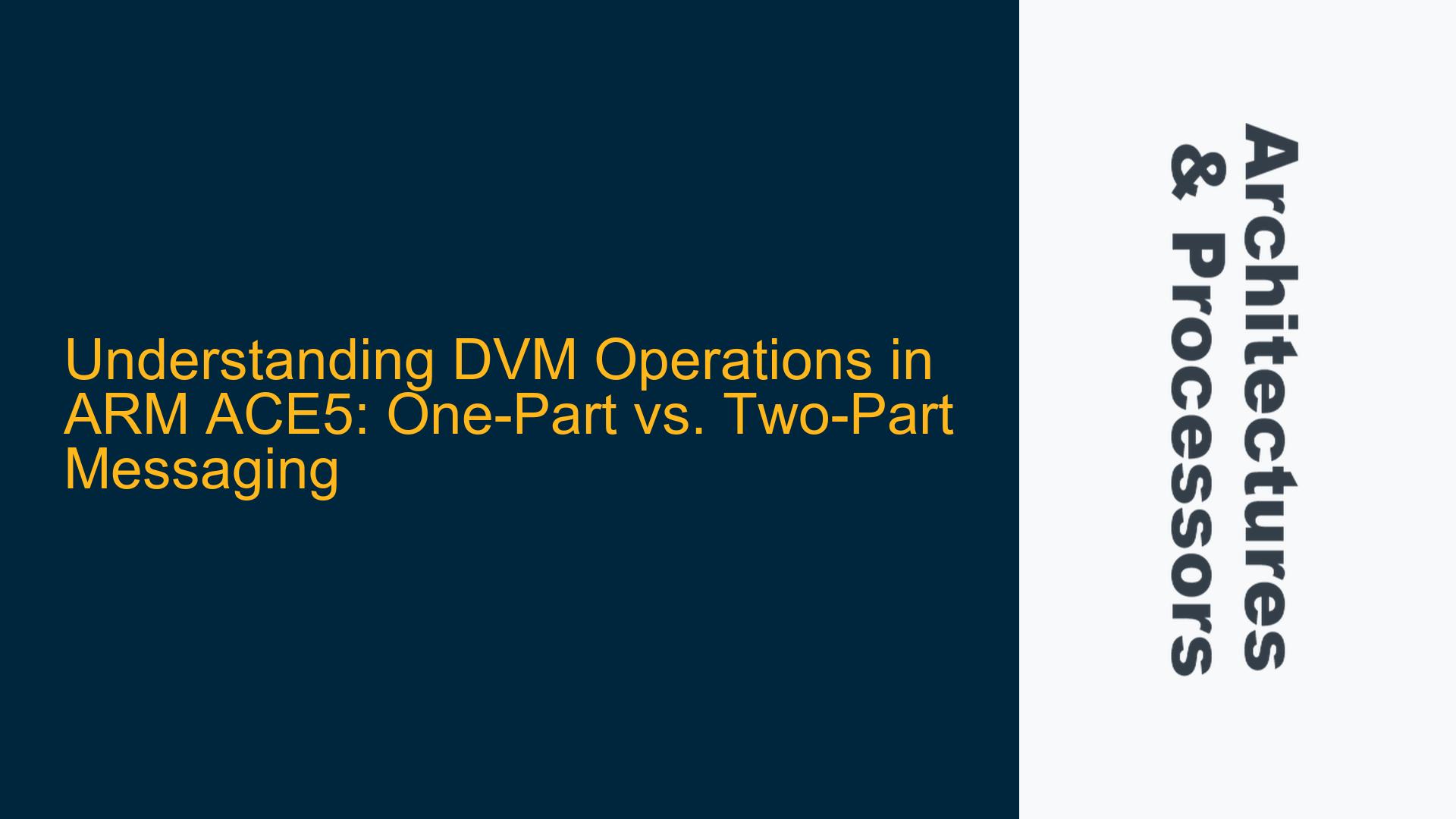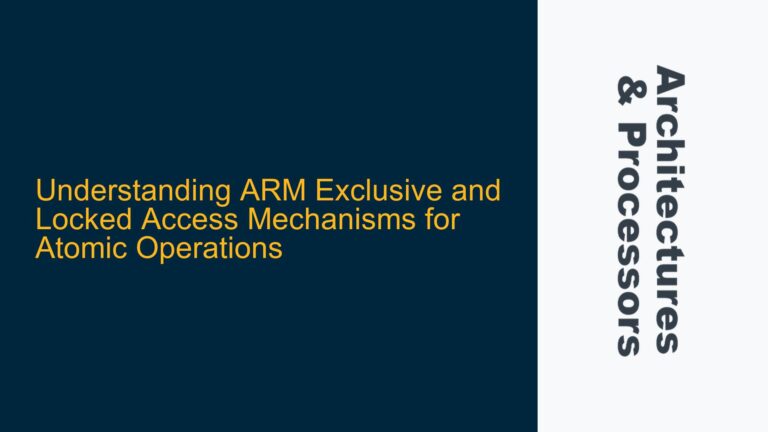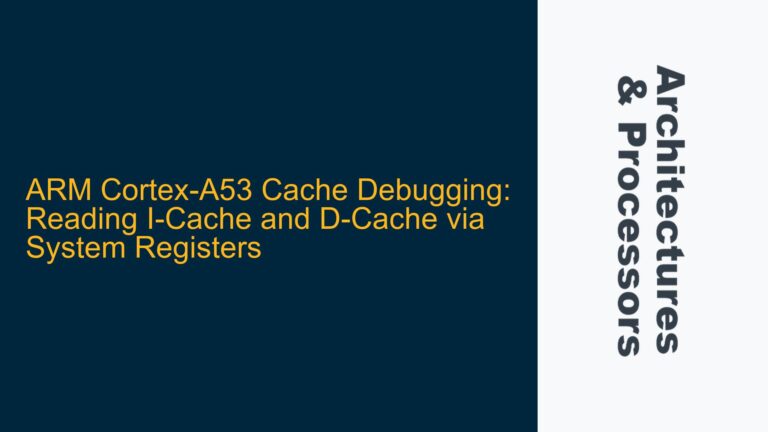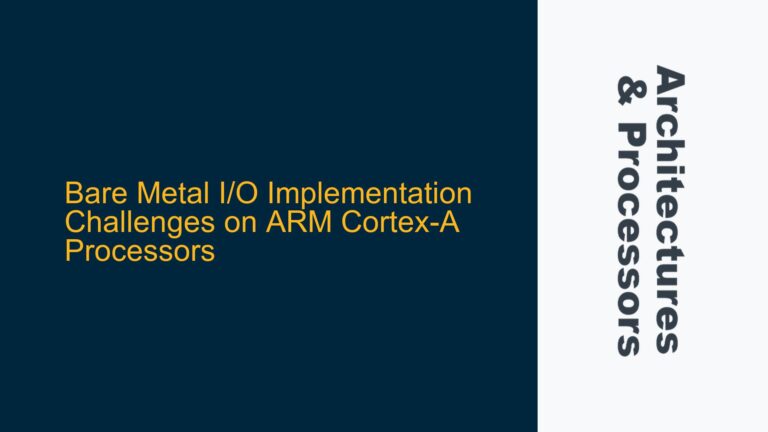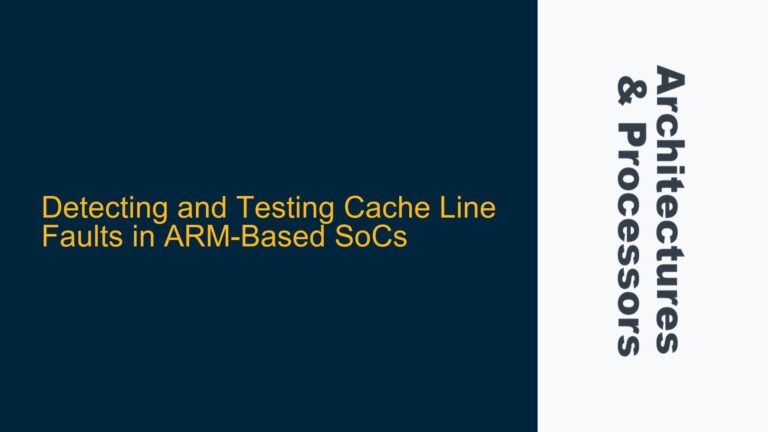ARM ACE5 DVM Operations: When to Use One-Part or Two-Part Messaging
Distributed Virtual Memory (DVM) operations in ARM ACE5 are a critical aspect of managing memory coherence and virtual memory across multiple cores and devices in a system. The choice between one-part and two-part messaging in DVM operations is not arbitrary but is dictated by the specific requirements of the operation being performed. This post delves into the intricacies of DVM operations, focusing on the conditions under which one-part or two-part messaging is appropriate, the underlying mechanisms, and how to ensure correct implementation to avoid errors.
ARM ACE5 DVM Operations: Key Concepts and Use Cases
DVM operations in ARM ACE5 are designed to facilitate communication between different components in a system, particularly in scenarios involving virtual memory management. These operations are essential for maintaining memory coherence, especially in systems with multiple cores or devices that share memory. The ARM ACE5 protocol supports two types of DVM messages: one-part and two-part messages.
One-part messages are typically used for operations that do not require address information. These messages are simpler and involve a single transaction. They are suitable for operations that affect the entire memory system or a large subset of it, such as invalidating all entries in a Translation Lookaside Buffer (TLB).
Two-part messages, on the other hand, are used when the operation requires address information. These messages are more complex and involve two transactions: the first part carries the command, and the second part carries the address. Two-part messages are necessary for operations that target specific memory locations, such as invalidating a particular TLB entry or performing a cache maintenance operation on a specific address range.
The decision to use one-part or two-part messaging is not merely a matter of preference but is dictated by the nature of the operation. For instance, if the operation involves invalidating all TLB entries, a one-part message is sufficient. However, if the operation requires invalidating a specific TLB entry associated with a particular address, a two-part message is necessary.
Memory Address Requirements and DVM Message Selection
The selection between one-part and two-part DVM messages is primarily determined by whether the operation requires address information. This requirement is explicitly defined in the ARM AXI.K Specification, particularly in Table A15.8, which outlines the conditions under which a two-part message is necessary.
In the context of DVM operations, the address field (Addr) plays a crucial role. When the Addr field is set to 1, it indicates that the operation requires a two-part message. This is because the address information cannot be accommodated within the payload of a one-part message. The ARADDR signal, which carries the address in an AXI transaction, has limited space, and when the operation involves address-specific actions, a two-part message is necessary to convey the required information.
For example, consider a scenario where a DVM operation is required to invalidate a specific TLB entry associated with a particular virtual address. In this case, the operation must include the virtual address to identify the exact TLB entry to be invalidated. Since the address information cannot fit within the payload of a one-part message, a two-part message is used. The first part of the message carries the command to invalidate the TLB entry, and the second part carries the virtual address.
Conversely, if the operation does not require address information, a one-part message is sufficient. For instance, if the operation involves invalidating all TLB entries, there is no need to specify an address, and a one-part message can be used to broadcast the command to all relevant components.
Implementing DVM Operations: Ensuring Correct Field Configuration
Implementing DVM operations correctly requires careful attention to the configuration of the fields in the DVM message. The ARM AXI.K Specification provides detailed guidelines on how to set these fields for different types of DVM operations. Ensuring that all fields are set correctly is crucial to avoid errors and ensure that the operation is performed as intended.
One common source of errors in DVM operations is the incorrect configuration of the Addr field. As mentioned earlier, the Addr field determines whether a one-part or two-part message is required. If the Addr field is not set correctly, the operation may fail, or the system may behave unpredictably. For example, if a two-part message is required but a one-part message is used instead, the address information will be missing, and the operation will not be performed correctly.
Another important consideration is the correct configuration of the command field. The command field specifies the type of DVM operation to be performed, such as TLB invalidation, cache maintenance, or synchronization. The command field must be set according to the operation being performed, and the corresponding fields must be configured accordingly. For instance, if the operation involves invalidating a TLB entry by Address Space Identifier (ASID), the ASID field must be set correctly to identify the specific TLB entries to be invalidated.
In addition to the Addr and command fields, other fields in the DVM message may also need to be configured depending on the operation. For example, if the operation involves cache maintenance, the cache level and cache type fields must be set correctly to specify which cache levels and types are affected by the operation.
To ensure correct field configuration, it is essential to refer to the ARM AXI.K Specification and follow the guidelines provided for each type of DVM operation. The specification includes detailed tables that describe the required fields for each operation, as well as examples of how to set these fields for different scenarios.
Troubleshooting DVM Operations: Common Issues and Solutions
Despite careful configuration, issues can still arise when implementing DVM operations. Some common issues include incorrect message type selection, field misconfiguration, and timing issues. This section discusses these issues and provides solutions to address them.
Incorrect Message Type Selection: One of the most common issues in DVM operations is the incorrect selection of message type. As discussed earlier, the choice between one-part and two-part messages depends on whether the operation requires address information. If the wrong message type is selected, the operation will not be performed correctly. For example, if a two-part message is required but a one-part message is used, the address information will be missing, and the operation will fail.
To avoid this issue, it is essential to carefully analyze the operation being performed and determine whether address information is required. If the operation involves address-specific actions, such as invalidating a specific TLB entry or performing cache maintenance on a specific address range, a two-part message must be used. Conversely, if the operation does not require address information, a one-part message is sufficient.
Field Misconfiguration: Another common issue is the misconfiguration of fields in the DVM message. This can occur if the fields are not set according to the operation being performed or if the values are incorrect. For example, if the Addr field is not set correctly, the system may misinterpret the message type, leading to incorrect behavior.
To address this issue, it is crucial to refer to the ARM AXI.K Specification and follow the guidelines for setting the fields for each type of DVM operation. The specification provides detailed tables that describe the required fields for each operation, as well as examples of how to set these fields for different scenarios. By following these guidelines, you can ensure that the fields are configured correctly and that the operation is performed as intended.
Timing Issues: Timing issues can also arise in DVM operations, particularly in systems with multiple cores or devices that share memory. These issues can occur if the DVM messages are not synchronized correctly, leading to race conditions or incorrect behavior.
To avoid timing issues, it is essential to ensure that the DVM messages are synchronized correctly with other operations in the system. This can be achieved by using appropriate synchronization mechanisms, such as barriers or semaphores, to ensure that the DVM messages are executed in the correct order. Additionally, it is important to consider the timing requirements of the specific operation being performed and ensure that the DVM messages are issued at the appropriate time.
Debugging DVM Operations: Debugging DVM operations can be challenging, particularly in complex systems with multiple cores or devices. However, there are several tools and techniques that can help identify and resolve issues.
One useful technique is to use simulation or emulation tools to model the behavior of the system and observe the DVM messages as they are executed. These tools can provide detailed insights into the timing and sequencing of the messages, as well as any errors or inconsistencies that may occur.
Another useful technique is to use debug registers or trace buffers to capture the DVM messages as they are executed. These registers or buffers can provide a record of the messages that were issued, as well as any errors or exceptions that occurred. By analyzing this information, you can identify the root cause of the issue and take corrective action.
In conclusion, DVM operations in ARM ACE5 are a powerful tool for managing memory coherence and virtual memory in complex systems. However, implementing these operations correctly requires careful attention to the selection of message type, configuration of fields, and synchronization with other operations. By following the guidelines provided in the ARM AXI.K Specification and using appropriate debugging tools and techniques, you can ensure that DVM operations are performed correctly and avoid common issues.
